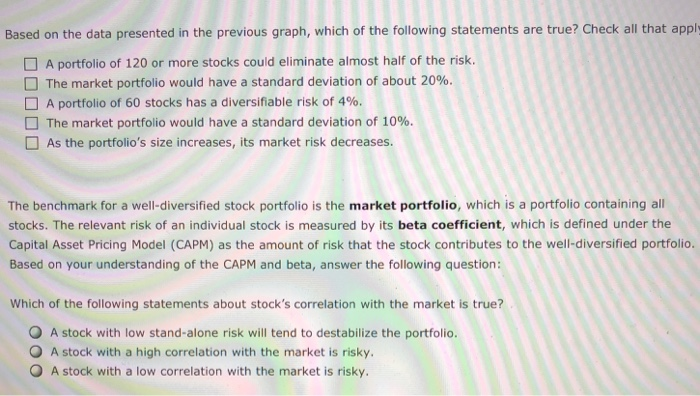Answered step by step
Verified Expert Solution
Question
1 Approved Answer
the other three vertical dotted line points in order from left to right are (16,20),(60,14),(120,11) 8. Effects of portfolio size on portfolio risk Aa Aa
the other three vertical dotted line points in order from left to right are (16,20),(60,14),(120,11) 


Step by Step Solution
There are 3 Steps involved in it
Step: 1

Get Instant Access to Expert-Tailored Solutions
See step-by-step solutions with expert insights and AI powered tools for academic success
Step: 2

Step: 3

Ace Your Homework with AI
Get the answers you need in no time with our AI-driven, step-by-step assistance
Get Started


